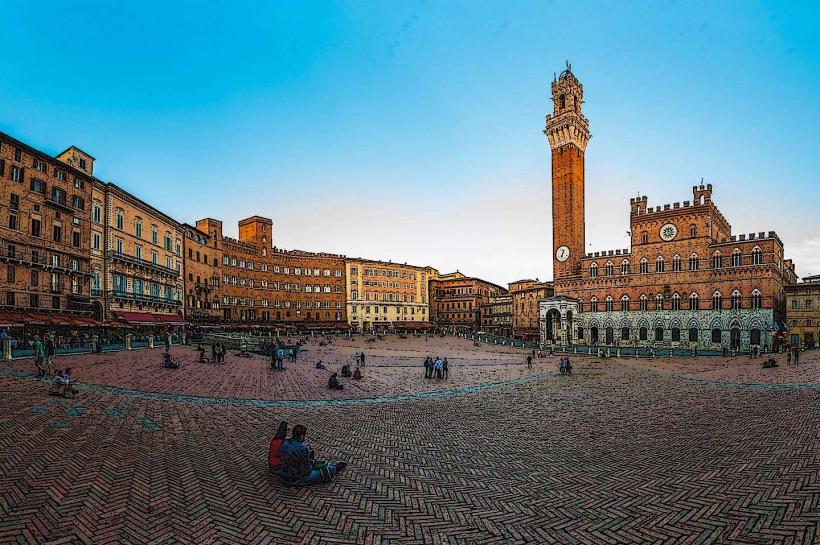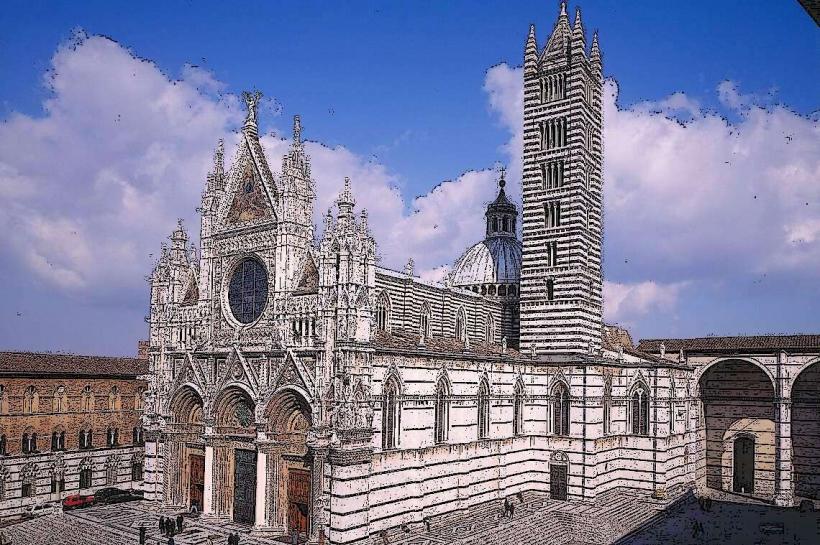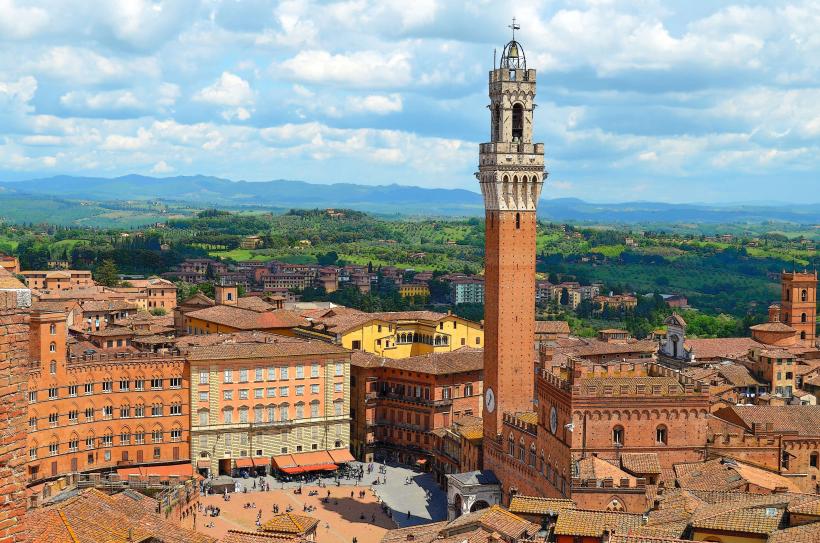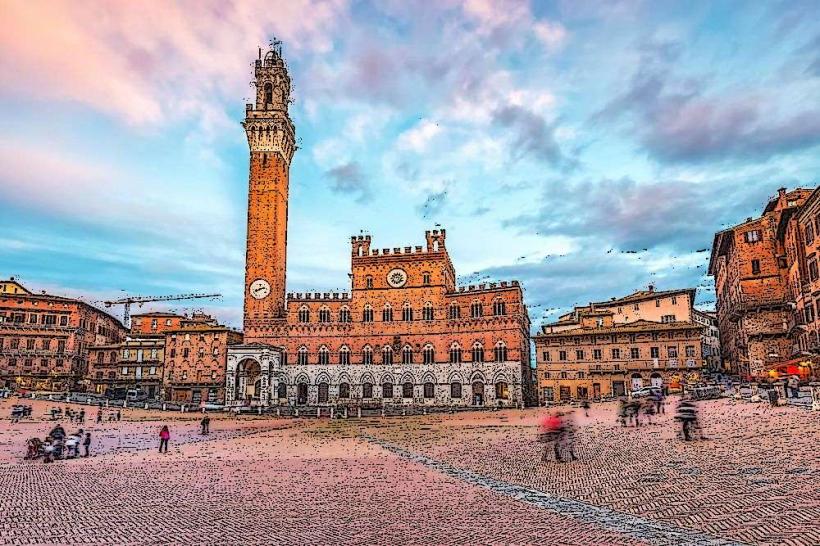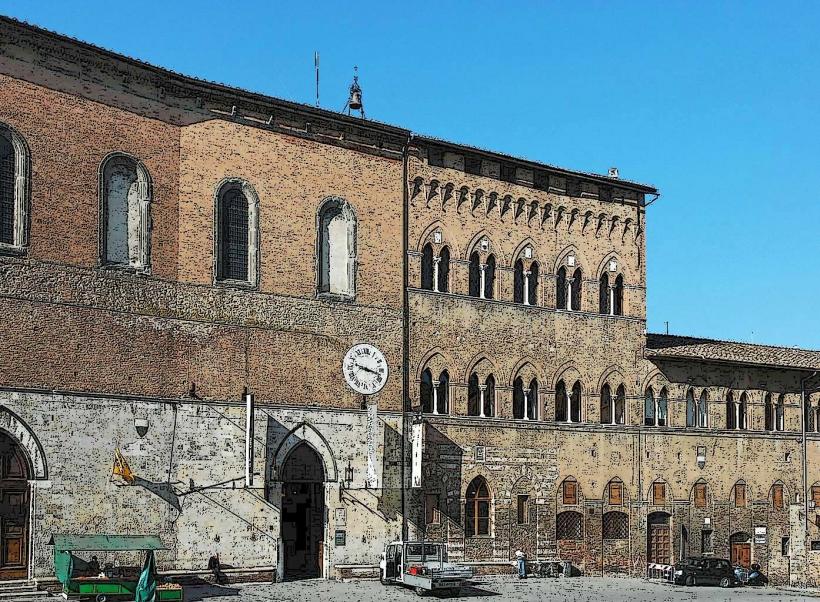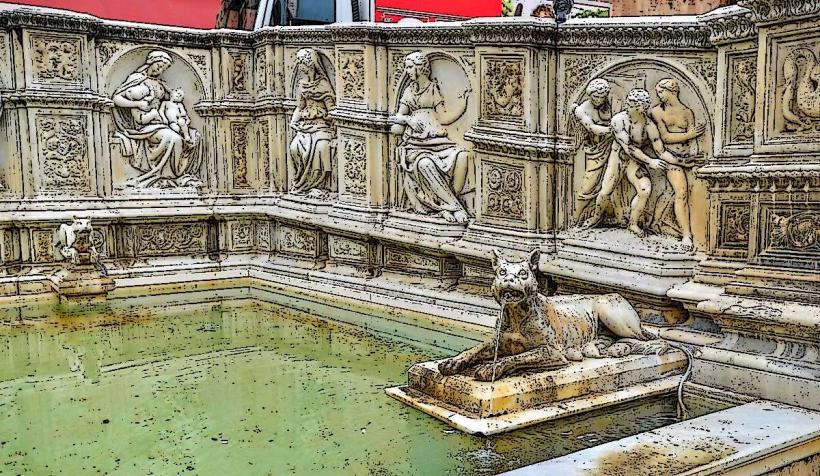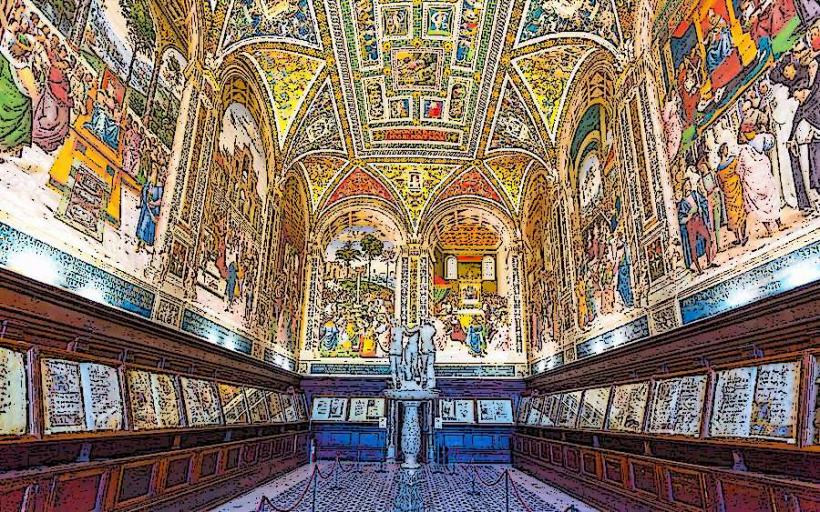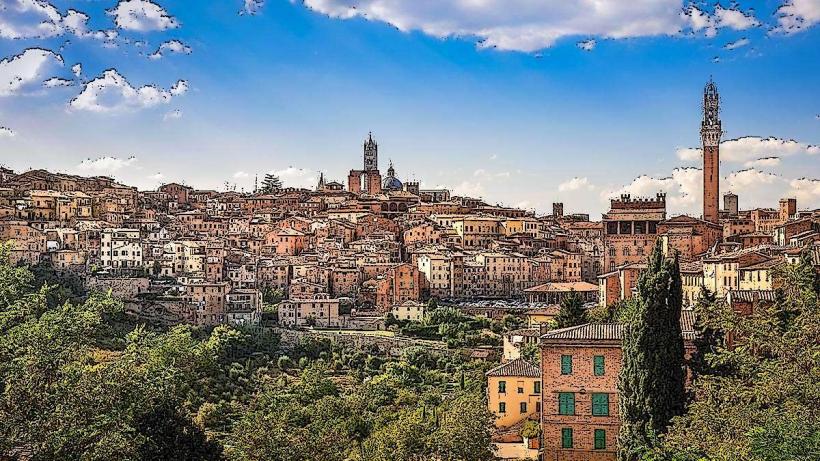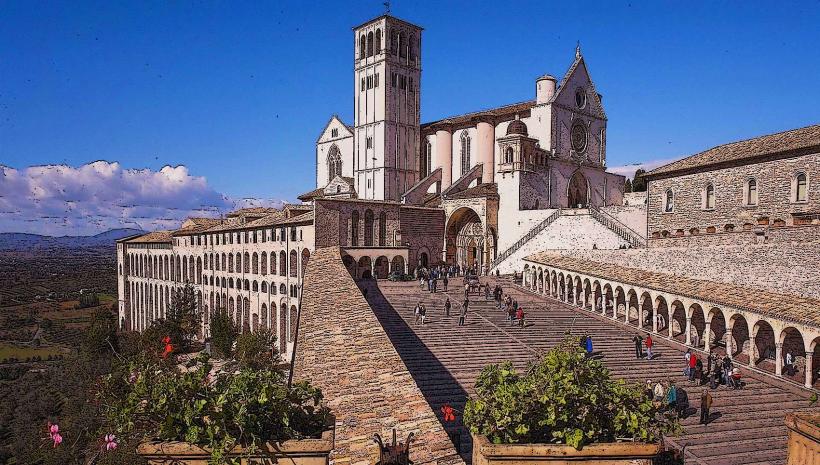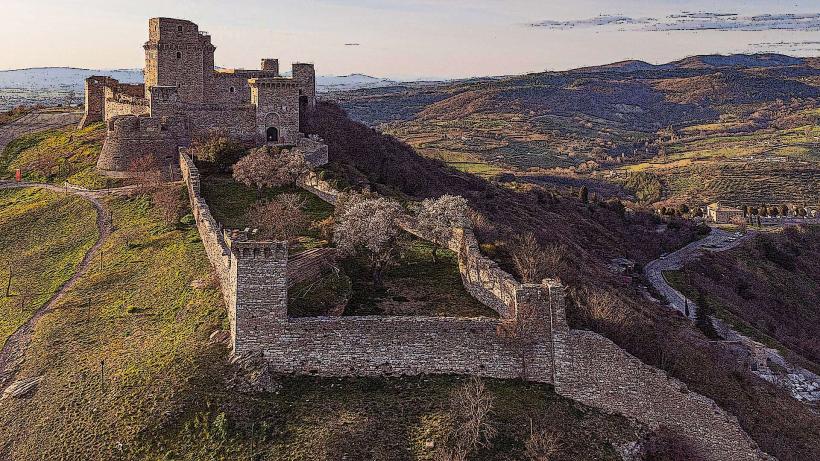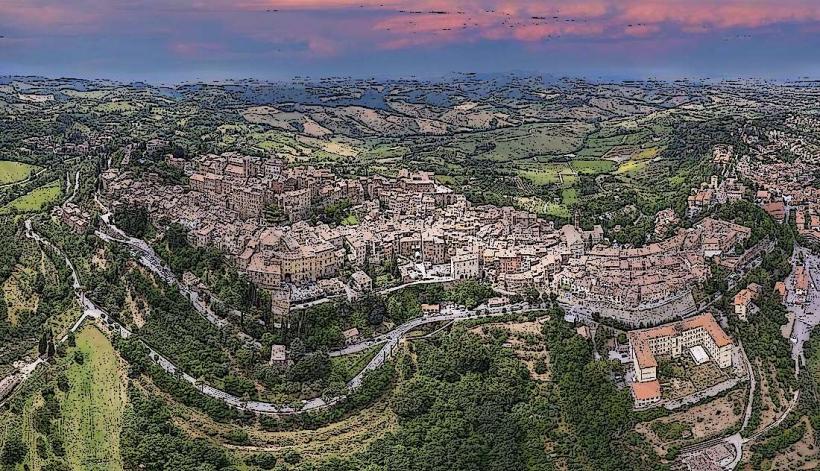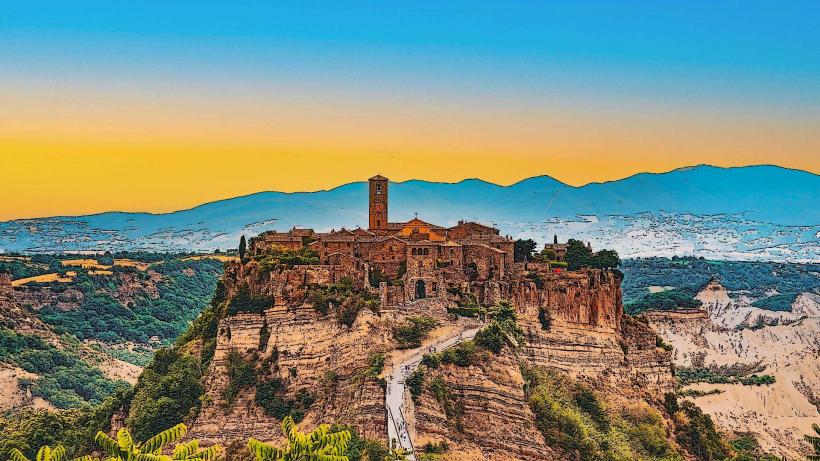Information
Landmark: Abbey of San GalganoCity: Siena
Country: Italy
Continent: Europe
The Abbey of San Galgano is a striking and historically significant ruin located in the Tuscany region of central Italy, near the town of Chiusdino, in the province of Siena. This Cistercian monastery, founded in the 12th century, is renowned for its architectural beauty and the legendary story of its founder, San Galgano (Saint Galgano). Today, the abbey is an important cultural and spiritual site, attracting visitors for its dramatic ruins, its historical legacy, and its association with one of the most fascinating medieval saints in Italy.
Historical Background:
The Life of San Galgano: The Abbey of San Galgano is closely linked to the life of San Galgano, a knight who lived in the 12th century in the region of Tuscany. According to legend, Galgano was a warrior and nobleman who had a life of excess, fighting in numerous battles and indulging in worldly pleasures. However, he experienced a profound spiritual conversion, which led him to abandon his life of violence.
In a famous event, Galgano is said to have thrust his sword into a stone, and it miraculously became embedded, symbolizing his renunciation of the material world. This moment is commemorated by the "Sword in the Stone", a unique feature of the site that attracts visitors from all over the world. After his conversion, Galgano retreated to the Mount of Montesiepi, where he lived as a hermit and founded a chapel. He died in 1181 and was canonized as a saint by Pope Gregory XIII in 1185.
Foundation of the Abbey: The Abbey of San Galgano was founded in 1218 by Cistercian monks as a result of the growing popularity of the sanctity of San Galgano. The monks established the abbey to serve as a place of pilgrimage and to promote the ideals of the Cistercian Order, which emphasized simplicity, austerity, and a close connection to nature. The abbey quickly became an important spiritual and economic center in Tuscany, with vast lands and an extensive agricultural estate.
Architectural Features and Ruins:
The Abbey Church (San Galgano Abbey): The Abbey Church of San Galgano was originally built in the Gothic style, and much of it was constructed using local stone. The church is large, with a grand nave and impressive vaulted ceilings, though today much of the structure remains in ruins. The roof, which was once a magnificent wooden ceiling, has long since collapsed, giving the church a unique and dramatic atmosphere as an open-air ruin.
Despite the destruction, visitors can still admire the remains of the nave, the choir, and the cloisters, which are arranged in a typical Cistercian layout. The abbey’s walls are adorned with remnants of medieval frescoes that depict religious scenes, and the ruins are surrounded by a tranquil countryside, which adds to the abbey's peaceful and reflective atmosphere.
The Sword in the Stone (Spada nella Roccia): One of the most famous aspects of the Abbey of San Galgano is the legendary "Sword in the Stone". Located in the Hermitage of Montesiepi, which is a small chapel built by San Galgano himself, this sword is embedded in a stone, just as the legend tells. The sword is an enduring symbol of Galgano’s renunciation of violence and his commitment to living a life of peace and piety. The Sword in the Stone has become a popular and iconic image associated with the abbey and the story of San Galgano.
Cloisters and Monastic Buildings: The abbey complex included living quarters for the monks, a refectory, and a chapter house. Some of these monastic buildings, such as the Cloister and the chapter house, are still partially standing, offering visitors a glimpse into the abbey’s former grandeur. The Cloister was once a peaceful garden area where the monks could meditate and reflect.
The Abbey’s Decline: After its peak in the 13th and 14th centuries, the Abbey of San Galgano began to decline. The monks struggled with financial difficulties, and by the end of the 15th century, the abbey had been largely abandoned. During the following centuries, the abbey suffered further from neglect, natural disasters, and human intervention, leading to the ruinous state that we see today.
Religious Significance:
San Galgano’s Legacy: The Abbey of San Galgano remains an important religious site due to its connection with San Galgano. His life and his symbolic act of driving the sword into the stone are seen as representations of the rejection of worldly distractions and the pursuit of spiritual purity. The abbey, as his place of burial, became an important pilgrimage destination, and it is still revered by many as a place of spiritual reflection and devotion.
Sanctuary of San Galgano: The Chapel of San Galgano on the site, along with the Sword in the Stone, are the focal points for pilgrims who visit in hopes of finding inspiration in the saint’s life and teachings. The abbey is part of the Franciscan and Cistercian traditions and continues to inspire those who come to experience its peaceful setting and reflect on its historical and spiritual legacy.
Pilgrimage and Faith: The Abbey continues to be a place of spiritual importance, and the region’s deep ties to the Franciscan and Cistercian orders make it a site of pilgrimage for many Catholics. Visitors come not only to witness the ruins but also to participate in the church's religious services, particularly during special feast days.
The Surrounding Landscape and Visitor Experience:
The Tuscan Countryside: The Abbey of San Galgano is located in the picturesque Tuscan countryside, surrounded by rolling hills, olive groves, and vineyards. The serenity of the area adds to the abbey’s spiritual atmosphere, providing visitors with a peaceful environment for reflection and prayer. The location also offers stunning views of the surrounding landscape, making it a popular spot for photographers and nature lovers.
Visitor Access and Museum: Today, the Abbey of San Galgano is open to the public, and visitors can tour the ruins, explore the surrounding monastic grounds, and view the Sword in the Stone in the chapel of Montesiepi. The site also hosts cultural events, including music festivals and exhibitions, and visitors can learn more about the abbey’s history and religious significance through informational displays and guided tours. There is also a small museum dedicated to the history of the abbey and its founder.
Walking and Hiking Trails: The area surrounding the Abbey of San Galgano is ideal for walking and hiking. There are several paths through the countryside that lead visitors to and from the abbey, allowing them to experience the natural beauty of the region in a meditative way.
Conclusion:
The Abbey of San Galgano is a captivating and historic site that offers both a glimpse into Italy’s medieval past and an opportunity for spiritual reflection. Its dramatic ruins, including the famous Sword in the Stone, the Portico, and the Cloisters, stand as powerful symbols of San Galgano's life and his spiritual journey. For those interested in both history and spirituality, the abbey is a must-visit destination in Tuscany, offering a unique combination of art, legend, and natural beauty. The abbey remains a testament to the ideals of Cistercian monasticism and the enduring legacy of San Galgano himself.

